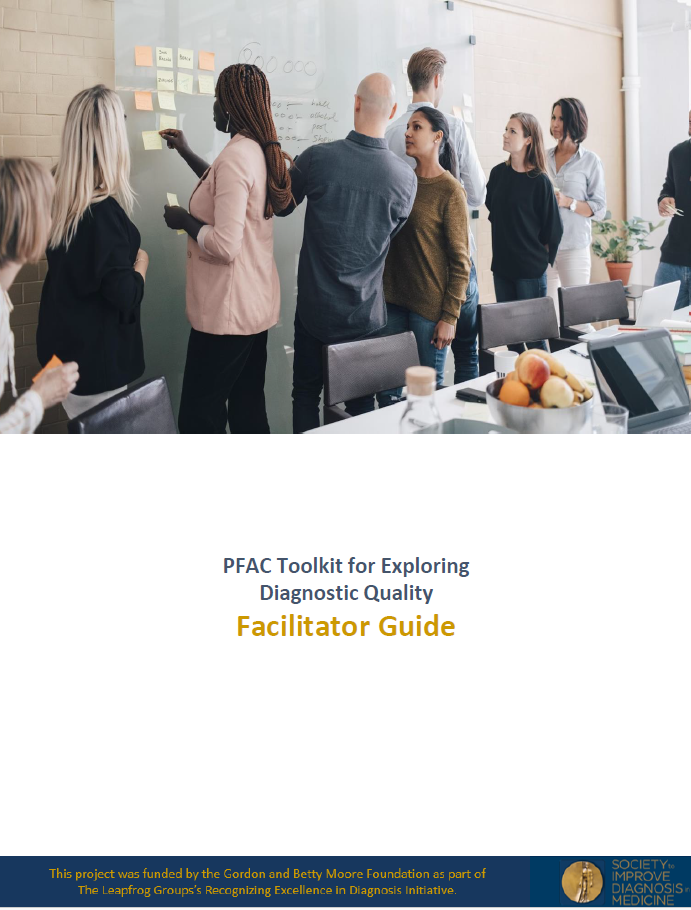Diagnosis—the process of identifying the medical condition or problem causing someone’s symptoms or changes—is something we often take for granted. If someone does not feel well or notices a change in their body, they expect to go to a healthcare provider to get an answer and receive some kind of treatment.
The process of diagnosis, however, can be very complicated. Many diseases or conditions have the same or very similar symptoms and signs. Some symptoms and signs are hard to see or hard to measure. Some conditions are “invisible,” and the patient may not feel any different. And because human beings are complex creatures, many different things can be happening in the body all at one time. For all of these reasons, it is not uncommon for a patient to receive the wrong diagnosis—something the medical field calls “diagnostic error.”
Studies show that about 1 in every 20 people will experience a diagnostic error when receiving care at their primary care or general practice setting. Other studies show that it is likely everyone will experience at least one diagnostic error in their lives. Sometimes, these errors are very small and not harmful, but other times, such errors can lead to significant harm or even death. In the hospital setting, 40,000 – 80,000 deaths each year are due to harm from diagnostic errors. But there are things we can do to improve the state of diagnostic safety.
One way to protect patients and families from experiencing diagnostic errors is to educate them about the risks and provide them with tools and resources to push for more answers when they feel like something “isn’t right”. In the hospital setting, a critical partner in pushing for diagnostic safety are Patient and Family Advisory Councils or PFACs. Because PFACs are comprised of people with lived experience of illness or disease, they bring first-hand knowledge of what it is like to go through the diagnostic process. While PFACs provide input and guidance to hospitals on a host of topics, they can be key advocates for improving diagnostic safety through a variety of activities and efforts.
This website—the Patient and Family Advisory Council (PFAC) Toolkit for Exploring Diagnostic Quality, was created as part of the Leapfrog Group’s “Recognizing Excellence in Diagnosis: Recommended Practices for Hospitals” project. The meaningful engagement of patients and families is one of the recommended practices, and this Toolkit was designed to help hospital PFACs learn about diagnosis and diagnostic quality and explore ways to reduce diagnostic error in their institutions. The Toolkit includes foundational information about diagnostic safety and patient engagement methodology and provides exercises and guidance for fighting back against diagnostic error in the hospital setting. When your PFAC has completed all of the sections, they will have in hand, a draft project or activity plan to tackle diagnostic error at your institution.
Access the Toolkit Below
Introductory Videos
Video 1: Who Should Use This Toolkit
Video 2: How Do We Know if our PFAC is Ready to use this Toolkit
Facilitator Guide
Section 1 - Introduction and How to Use this Toolkit
Part 1 Video: What are the Pieces of the Toolkit and How do we Use Them
Section 2 - Introduction to Patient and Family Engagement
Section 3 - Understanding the Diagnosis Process and Diagnostic Safety
Section 4 - Diagnosis and You
Section 5 - What PFAC can do about Diagnostic Quality in Hospitals
Section 6 - Getting Practical
Supplemental Materials
- Society to Improve Diagnosis in Medicine Patient Toolkit for Diagnosis
- "What If?" Template
- Template Letter for Hospital Leadership
- Template Deck for Meeting with Hospital Leadership
- Patient Engagement Template
- Evaluating Impact and Difficulty Matrix
- Multi-Voting Guidance
- Patient Engagement Plan Template
- Patient and Family Advisory Council Exemplars
- Glossary



